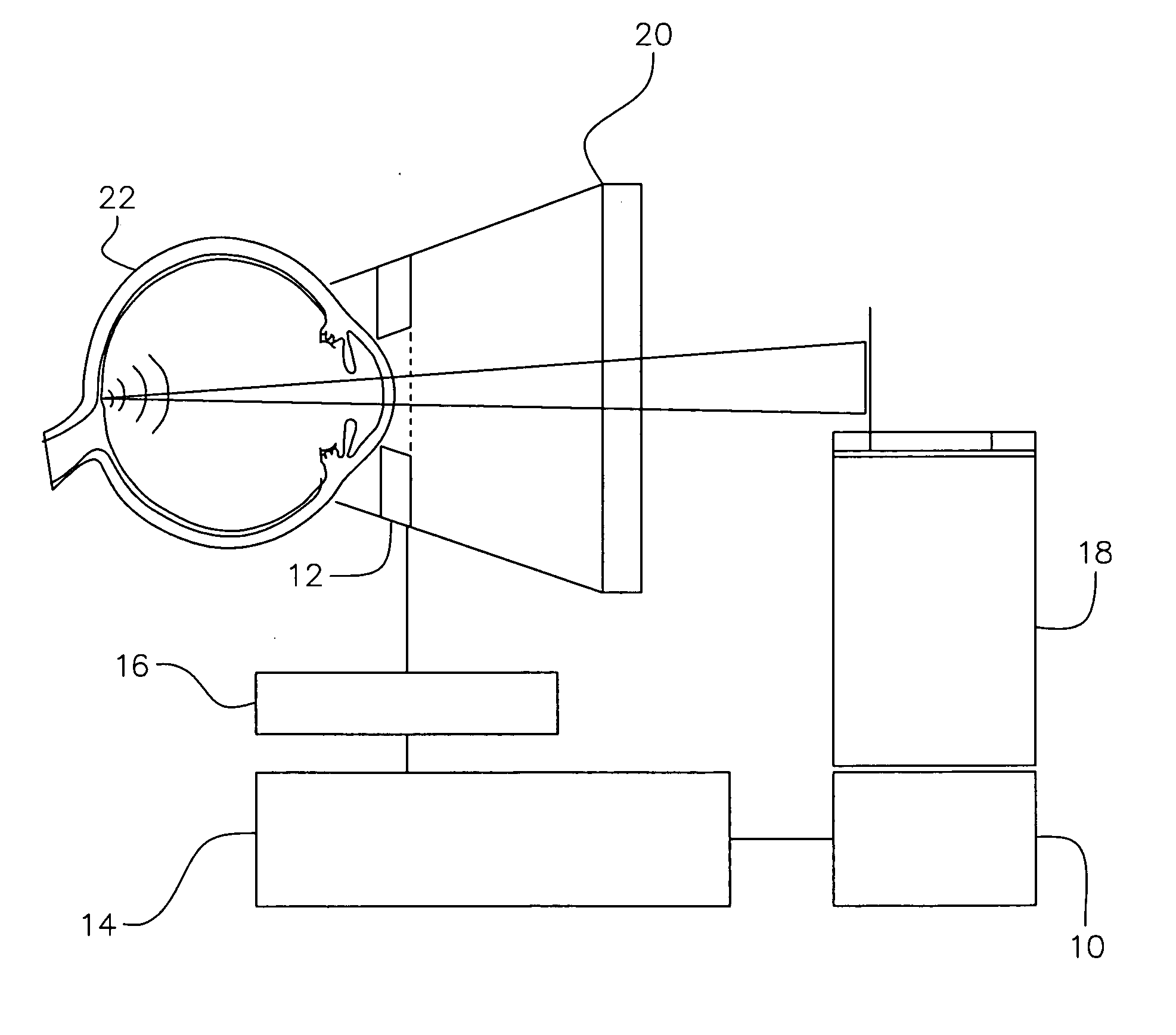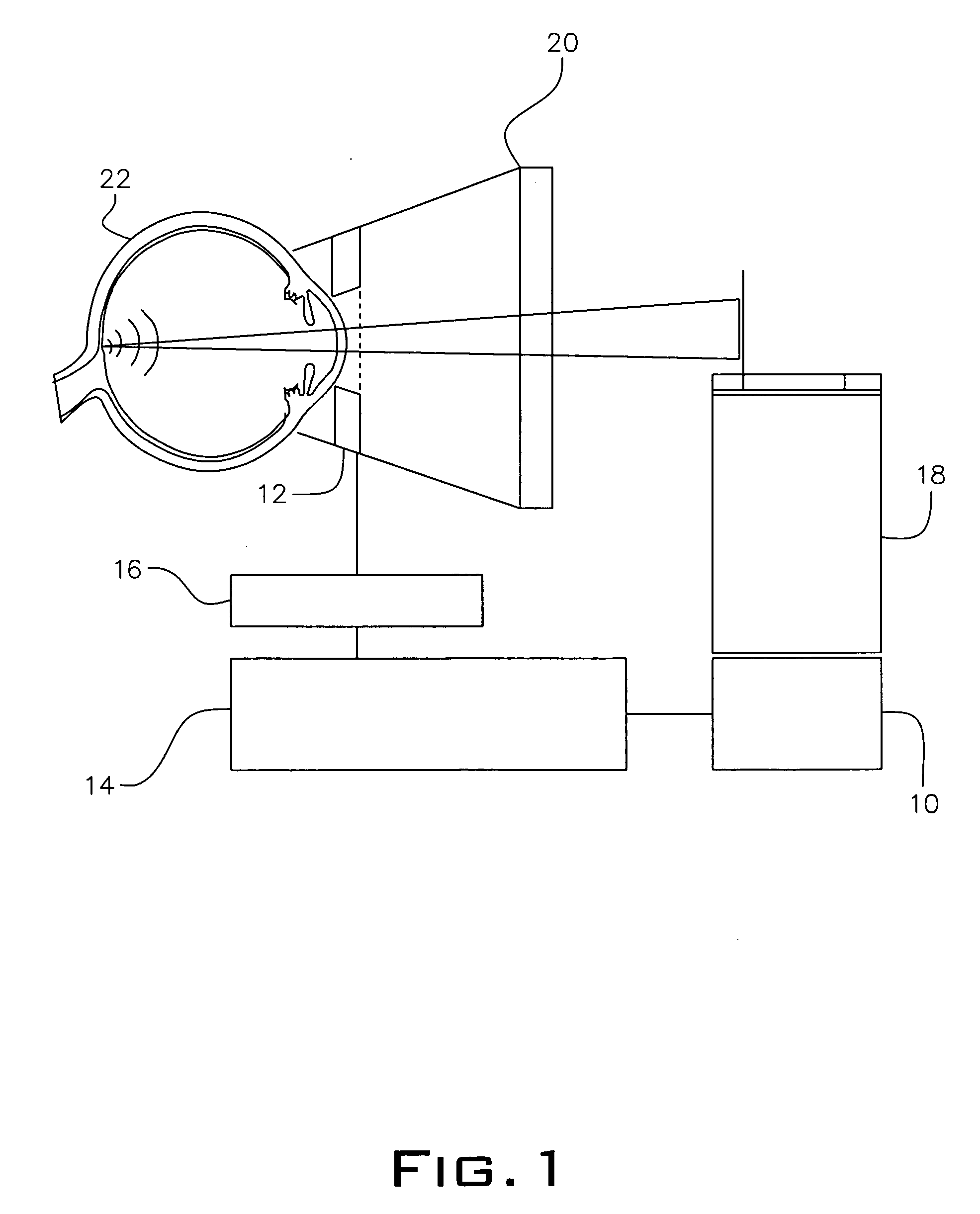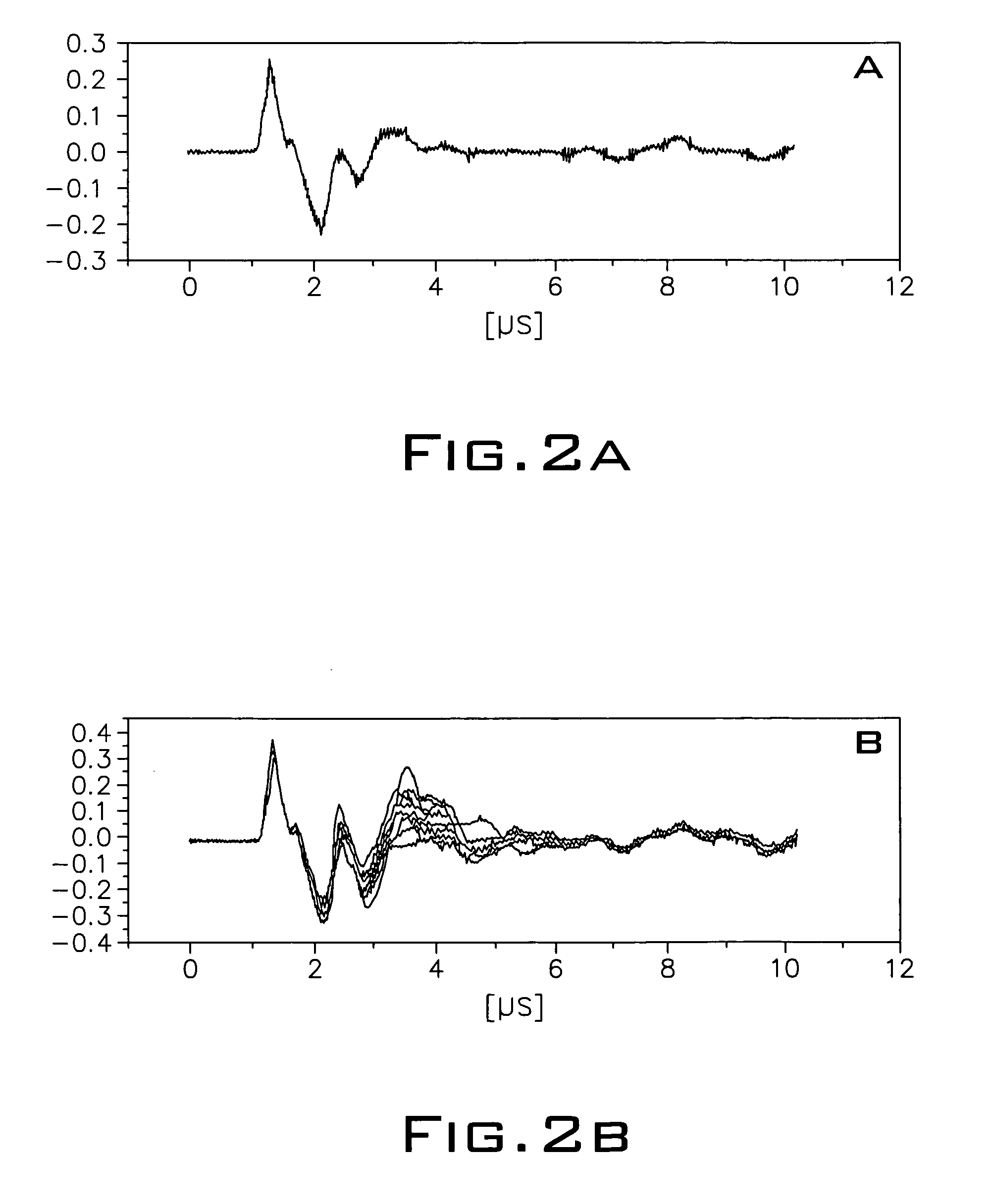Method for operation of laser
a laser and laser technology, applied in the field of laser operation, can solve the problems of ineffective invention, permanent loss of vision, disruption and disintegration of rpe cells,
- Summary
- Abstract
- Description
- Claims
- Application Information
AI Technical Summary
Benefits of technology
Problems solved by technology
Method used
Image
Examples
Embodiment Construction
, contained herein below, may be better understood when accompanied by a brief description of the drawings, wherein:
[0045]FIG. 1 is a survey sketch of an embodiment for an opto-acoustic measurement on an eye;
[0046]FIG. 2 is illustrates measurement results in a curve form wherein the superimposing of pressure transients of from pulse energy below a bubble formation threshold (A) and then pulse energy above a bubble formation threshold (B); time being plotted on the x axis and pressure being plotted in random units on the y axis (for both (A) and (B), thirty traces);
[0047]FIG. 3a shows an example for a rising pulse energy sequence until there is bubble formation detection;
[0048]FIG. 3b shows another example for a rising pulse energy sequence until there is bubble formation detection;
[0049]FIG. 3c shows an example of no further pulse energy rise once there has been bubble formation detection;
[0050]FIG. 3d shows an example of a reduced pulse energy sequence once there has been bubb...
PUM
 Login to View More
Login to View More Abstract
Description
Claims
Application Information
 Login to View More
Login to View More - R&D
- Intellectual Property
- Life Sciences
- Materials
- Tech Scout
- Unparalleled Data Quality
- Higher Quality Content
- 60% Fewer Hallucinations
Browse by: Latest US Patents, China's latest patents, Technical Efficacy Thesaurus, Application Domain, Technology Topic, Popular Technical Reports.
© 2025 PatSnap. All rights reserved.Legal|Privacy policy|Modern Slavery Act Transparency Statement|Sitemap|About US| Contact US: help@patsnap.com



